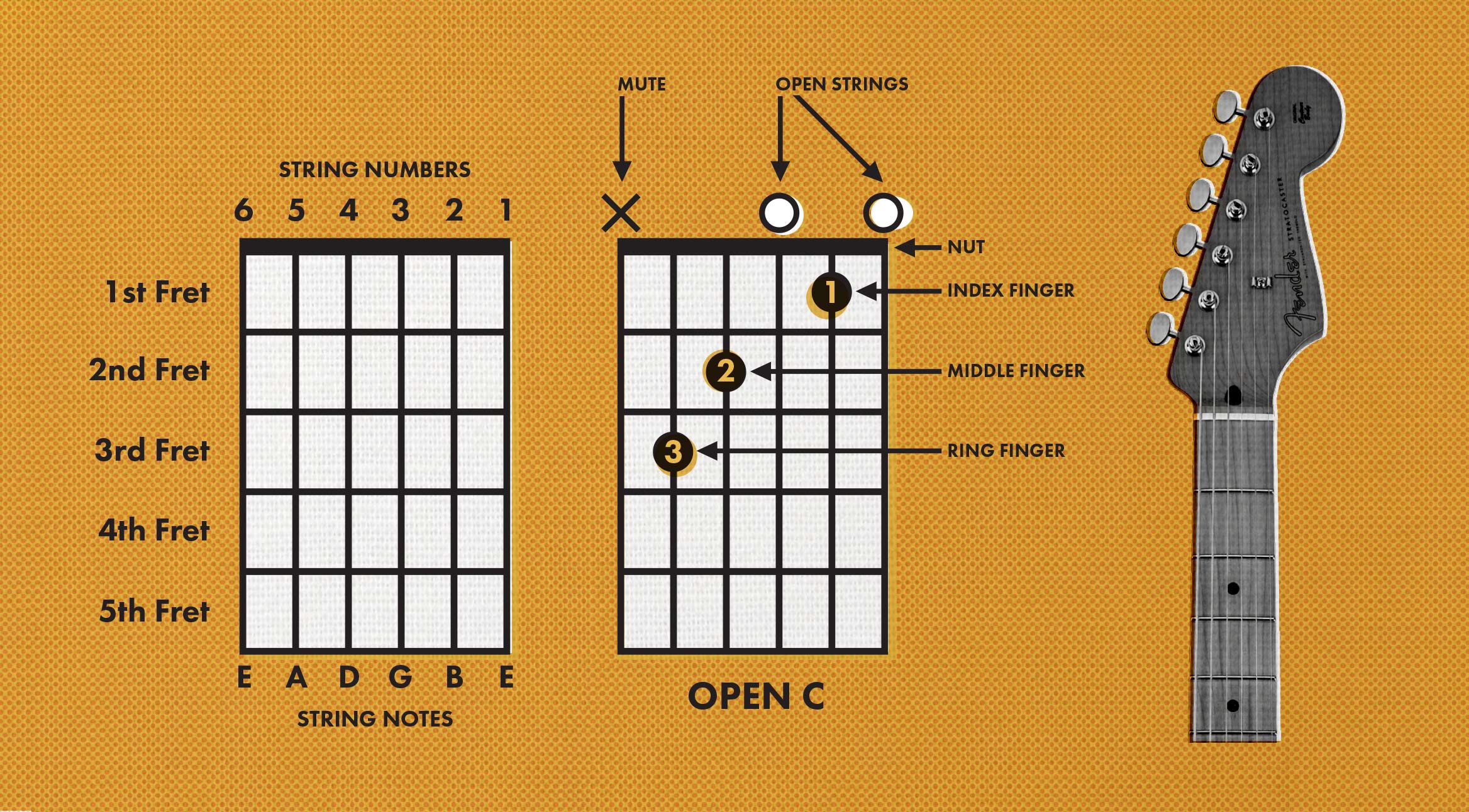
Sections
Chords. You should know them. After all, they are the very foundation of music.
And to learn them and truly increase your vocabulary, it would behoove you to understand how to read a guitar chord chart.
To the layperson, these charts probably seem confusing—a puzzling mix of lines, dots and numbers. What does it all mean?
Luckily, this puzzle isn’t too tough to decode.

Can you figure out these charts for basic open A, C and G chords?
A guitar chord chart is an image of a portion of the fretboard if the guitar was standing vertically and you were looking at it head-on. The vertical lines represent the strings. From left to right, the strings (in standard tuning) are low E (sixth string), A (fifth), D (fourth), G (third), B (second) and high E (first).
The horizontal lines represent the frets. A thicker line at the top of the diagram indicates the nut of the guitar. The next horizontal is the first fret, the one after that the second fret, and on down the road.
The dots in the diagram mark where to place the fingers of your fretting hand, with numbers assigned to each finger. Your index finger is 1, 2 is the middle finger, 3 is the ring finger and 4 is for the pinky (T means to play the note with your thumb).
You might have noticed Xs and Os on top of the chord chart. Those serve a purpose, as well. The X means that you mute the string or don’t play it, while O directs you to play that string open, with no fingering on that string.
It only takes a few chords to unlock a wealth of songs, and knowing how to properly read a chord chart is a key early step in any player’s development.
Learn more about chords with these lessons from Fender Play. If you're not a member yet, click here for a free Fender Play trial.
Don’t miss out!
Be the first to know about new products, featured content, exclusive offers and giveaways.


